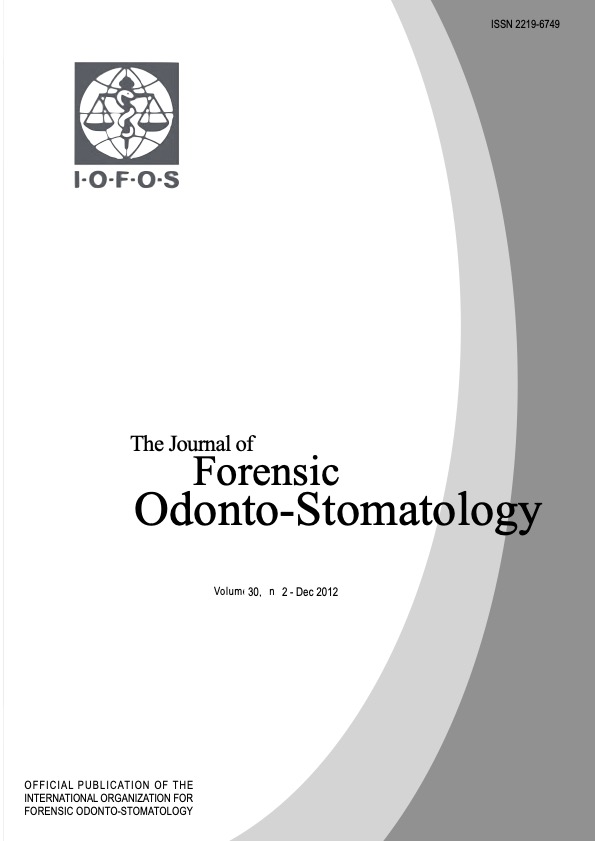Sexual dimorphism in human skulls: discriminant function analysis
Keywords:
Forensic anthropology, Sexual dimorphism, Craniometry, Forensic DentistryAbstract
Many anthropological studies have shown that sex can be determined using the human skeleton, specially by the exam of the pelvis and the skull. The aim of this study was to verify the presence of sexual dimorphism by craniometric analysis, identify the most reliable measures and propose a discriminant function for sex determination. The selected sample was composed by 100 adult skulls, 50 male and 50 female, from Cuiabá city, Mato Grosso State, Brazil. Of all the measures taken, only the difference between the bi-euryon distances has proven insignificant, while most dimorphic measure was bi-zygomatic diameter. A discriminant function was obtained by applying the bi-zygomatic, and the basion-lambda measures, with a success score of 72%. The authors concluded that most of the measures analyzed are sexually dimorphic and the discriminant function elaborated is reliable for sex determination in human identification for forensic purposes.

